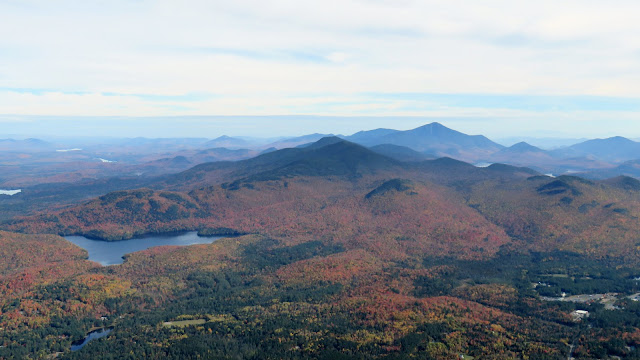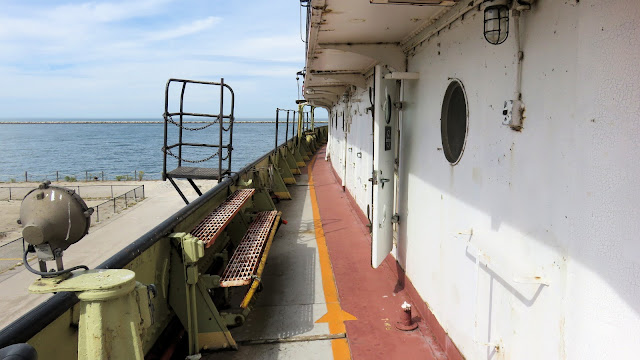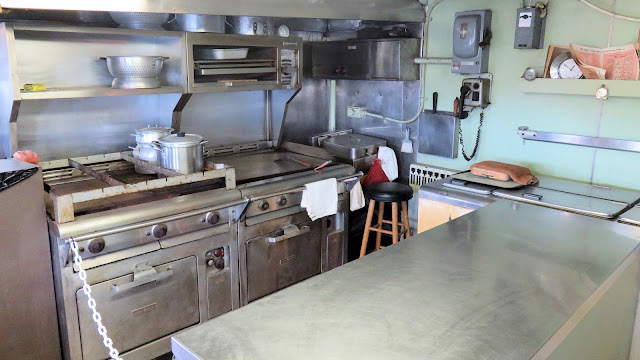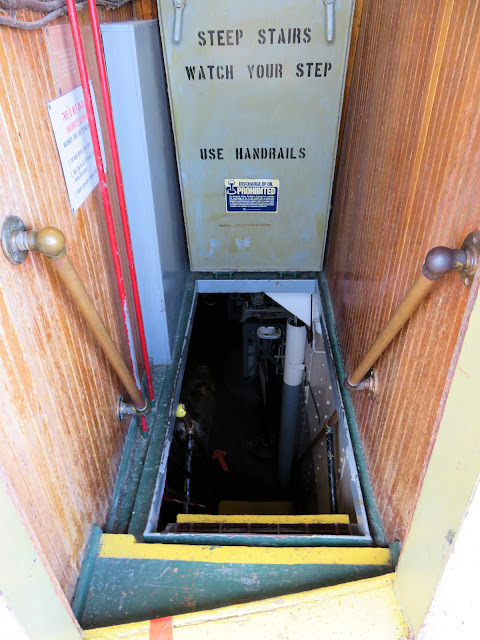Flight Plan Fluidity
As fall developed, I secured a vacation day on October 11 for my annual fall solo flight. A new twist in this tradition for 2021 was that, for the first time, it would not be solo! Kristy had the day off from work and wanted to join. In keeping with the island theme of recent years, I considered three new-to-me destinations in three different directions: Nantucket Island in Massachusetts, Tangier Island in Virginia, and Put In Bay in Ohio. I was most excited about renting something with four wheel drive and the requisite beach permit for the seven mile trek through the dunes to Nantucket's Great Point Lighthouse. Unfortunately, despite considering locations with great directional diversity, the weather was poor in every one of those directions. It became obvious that conditions would favor putting the Warrior on a northeast heading. This made Lake Placid the destination of choice. There was a certain symmetry to this considering that weather forced a cancellation of the Williamson Flying Club's planned excursion to Lake Placid just a week prior.
The weather giveth and the weather taketh away.
High Powered Visitor
As Kristy and I neared the Williamson-Sodus Airport on NY Route 104, we spotted a 2019 amphibious turboprop Cessna 208B Grand Caravan on short final for runway 10. It made for a rather large visitor to our small airport.
We do not sell Jet A, so turbine-powered visitors are rare. The crew was looking for a quick turn pitstop and I was in the right place at the right time to let them into the clubhouse. The aircraft was a corporate ship with a checkered history. Despite being a relative youngster compared to the aircraft I fly, it had already experienced a significant accident in which it flew through high tension wires while hotdogging low over the Susquehanna River. Coincidentally, it was en route to Sodus at the time. Despite significant damage, there were no injuries and the aircraft successfully returned to its home base on Long Island. The incident did, however, leave residents of Laceyville, Pennsylvania in the dark for a few hours.
As promised, the crew made a quick turn of it. The Caravan was airborne before I could begin my preflight inspection of the Warrior.
Long Way Around
| Date | Aircraft | Route of Flight | Time (hrs) | Total (hrs) |
| 11 Oct 2011 | N21481 | SDC (Sodus, NY) - LKP (Lake Placid, NY) - K09 (Piseco, NY) - SDC | 4.0 | 2377.1 |
We launched over photogenic Sodus Bay and climbed to 5,500 feet.
 |
| Ground track generated by ForeFlight from Sodus to Lake Placid. |
The route to Lake Placid always merits some discussion. One option is to fly direct through military operations areas (MOAs) and over relatively desolate, densely wooded, and unforgiving terrain. An alternative route is to follow the Lake Ontario shore to the St Lawrence River Valley with an approach to Lake Placid from the northwest. This adds fifteen minutes to the overall flight time, but keeps the airplane over flatter open terrain closer to civilization. I opted for the longer route, though this confused the controller at Wheeler-Sack who was quite keen to clear me direct through the MOAs.
 |
| Northbound with the St Lawrence River in the distance. |
 |
| Boldt Castle on Heart Island near Alexandria Bay, NY. |
Although time was past for the Adirondacks to display their best seasonal colors, vibrant autumn hues still blanketed the lower elevations.
Closer to Lake Placid, a departure from Adirondack Regional in Saranac Lake popped up on the Boston Center frequency to request IFR clearance to Victor November Yankee.
I looked at Kristy with surprise. "That's Van Nuys in California!"
Boston Center cleared the aircraft, which was obviously no mere Cherokee, to Van Nuys as filed and issued an altitude beyond what Warrior 481 can achieve. As much as we enjoy our daytrips around the northeast, it is quite a thing to ponder a nonstop flight from the Adirondacks to southern California in a private aircraft.
Pointy and Lumpy
The Adirondack High Peaks ultimately emerged from the haze with the distinctive profile of Whiteface Mountain visible from many miles away. I have often said that flying the Adirondacks is good for a pilot's soul. This was my first visit to the northern Adirondacks since the end of 2020 and it was good to be back.
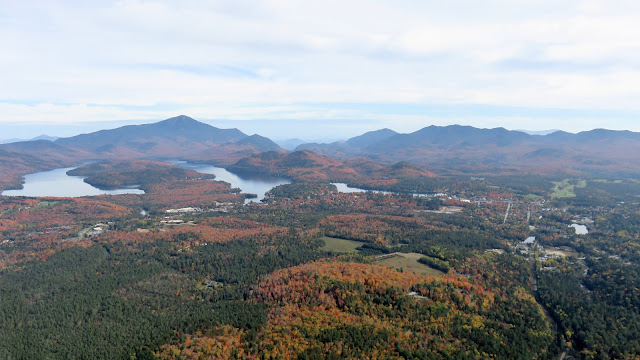 |
| Whiteface Mountain and Lake Placid at left with the town of Lake Placid to the right |
 |
| Final for runway 32 at Lake Placid. Photo by Kristy. |
 |
| Short final to runway 32 at Lake Placid. Photo by Kristy. |
 |
| Kristy with Warrior 481 on the ramp at Lake Placid and Whiteface Mountain in the distance. |
Go with the Brussels Sprouts
An airport staffer showed us the back way to my current favorite Lake Placid eatery, Big Slide Brewery & Public House. A narrow access road leads from the airport's T-hangars directly to the pub without requiring anyone to hike along the shoulder of the main road. See? You learn something new every time that you fly.
We had a characteristically excellent meal at Big Slide, but particularly enjoyed the fried brussels sprouts (with crispy pork belly, walnut, goat cheese, pickled pear, and sour ale caramel). They were absolutely amazing and prepared without a hint of bitterness. This appetizer was so popular that most of the surrounding tables on the outdoor patio were also enjoying it. "I don't do brussels sprouts," proclaimed the guy at the next table at a self-righteous volume. Clearly, he had never heard of taking a "no thank you bite".
 |
| Mirror Lake adjacent to downtown Lake Placid |
We walked into town and explored the shops, picking up a knick knack on clearance for The Bear at a comic book shop with some rare -- and expensive -- collectables. Overall, it was a beautiful, warm fall day to explore Lake Placid.
Through the Mountains
 |
| Downtown Lake Placid seen on departure from runway 32. |
 |
| The Olympic speed skating ring was being refurbished. |
 |
| Both halves of Lake Placid on the left, the north end of Mirror Lake on the right, Whiteface straight ahead. |
Although Mother Nature still had the color saturation turned way up on the lower elevations, it was a shame that we lacked a clear blue sky to really make those colors pop.
We followed NY-86 northeast out of the valley and past Whiteface before turning southbound to follow the Adirondack valleys southward toward Piseco, NY.
Piseco
As we lined up on runway 22 at Piseco, I was surprised to see that the runway lights were on at full intensity. When we parked, an airport attendant greeted us at the airplane. I asked him if he turned the lights on for us. "I turned them on when I heard you coming in. They're brand new! What do you think?"
I offered him some superlatives about their brightness, which seemed to please him greatly. We took on fuel, used the restroom, and launched a few minutes later on the return trip to Sodus, adding another successful fall excursion to the logbook.











